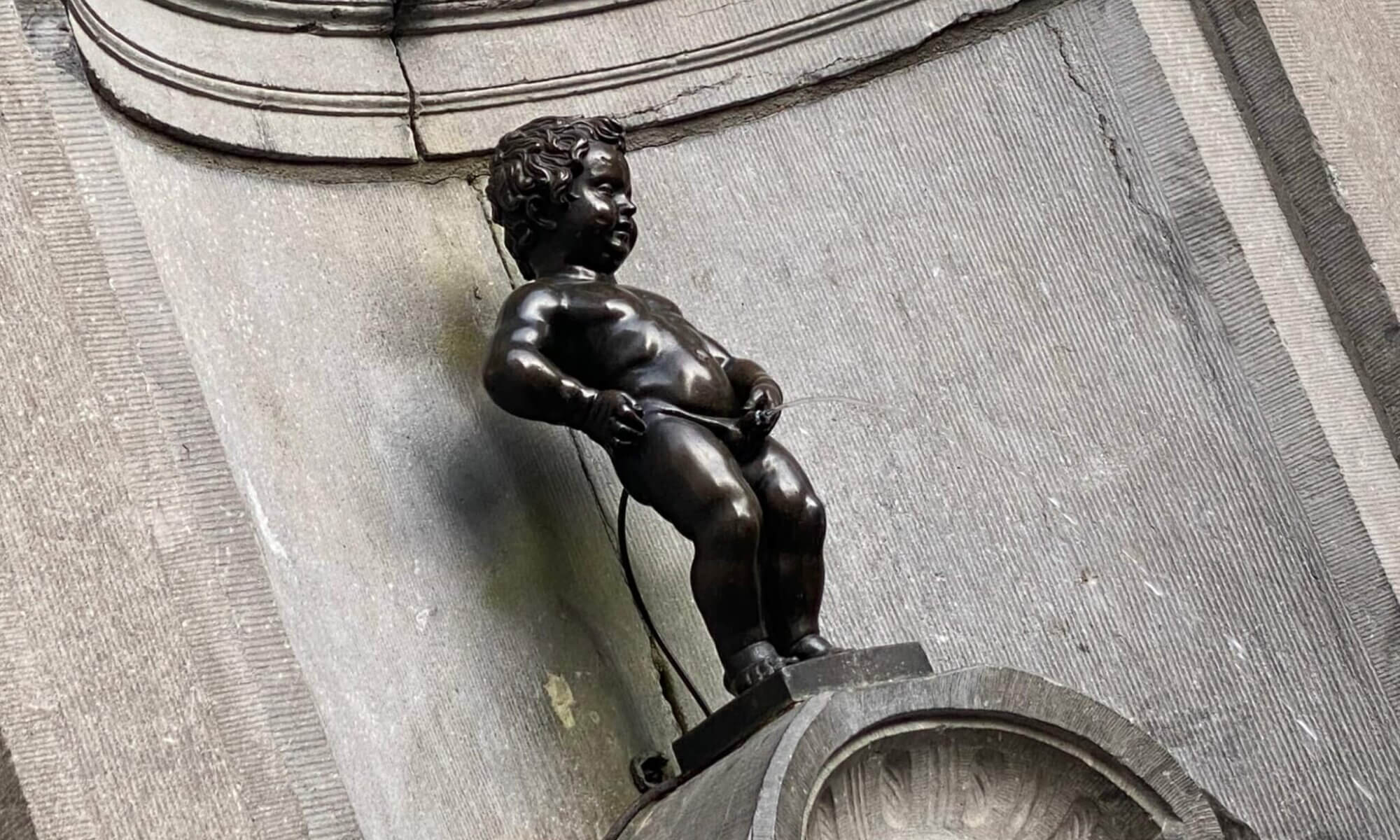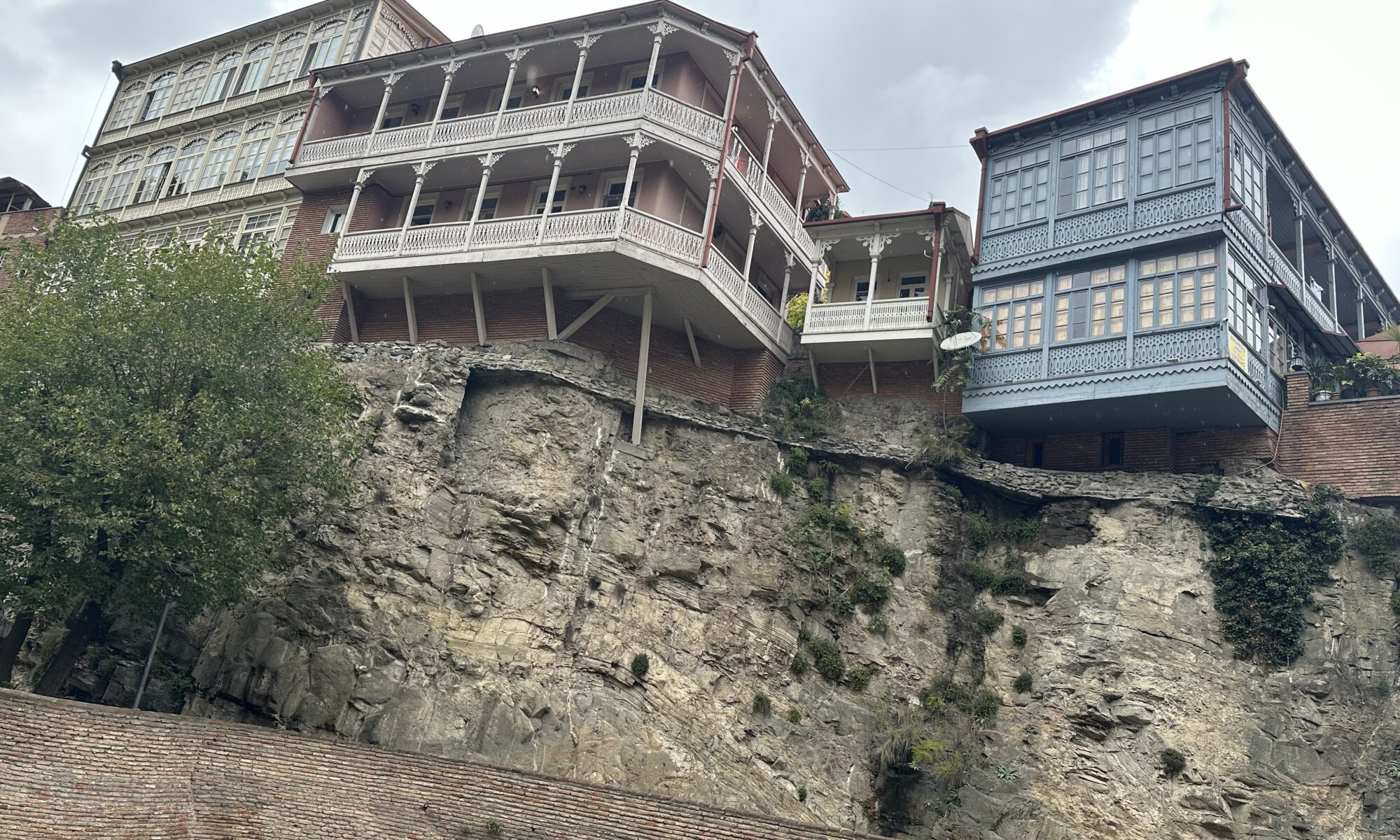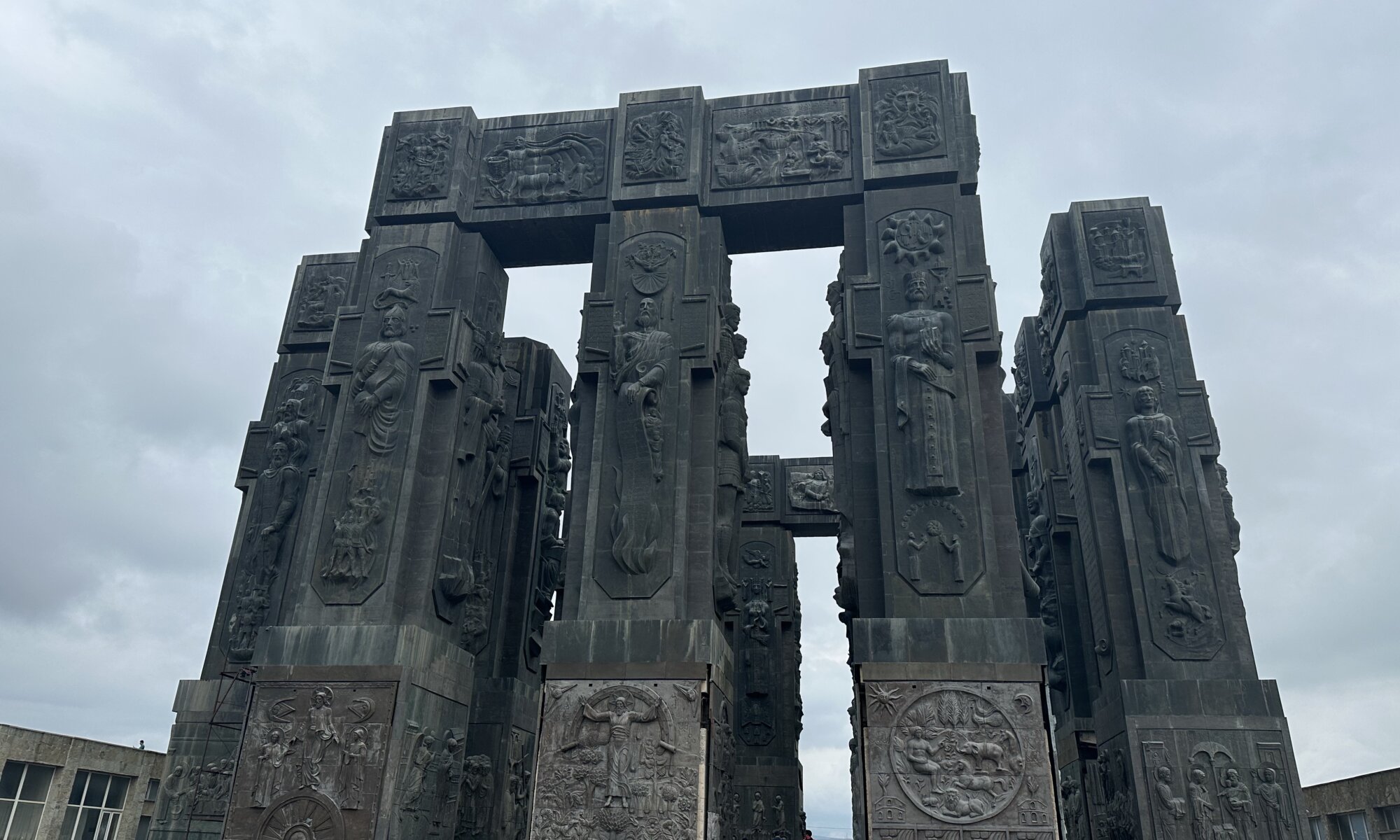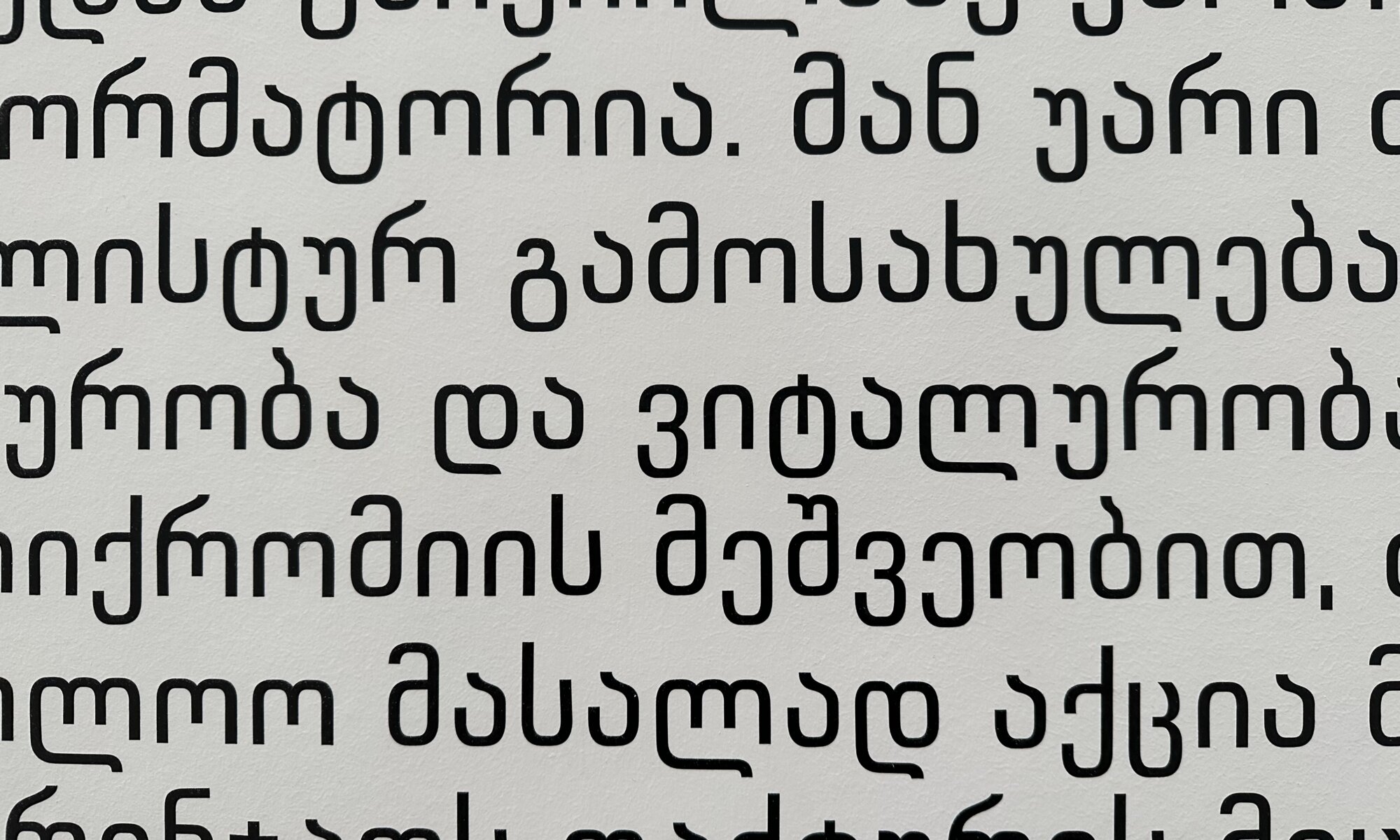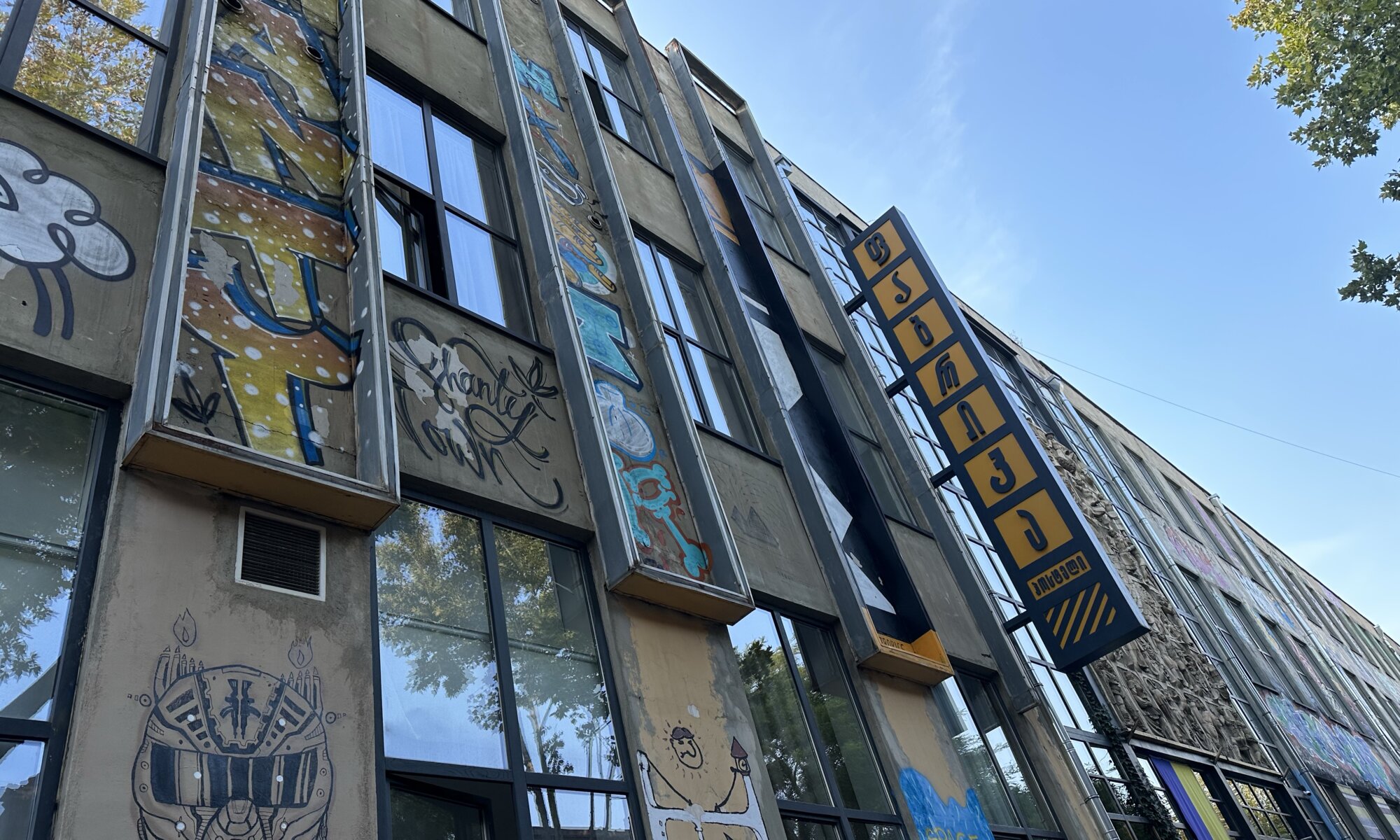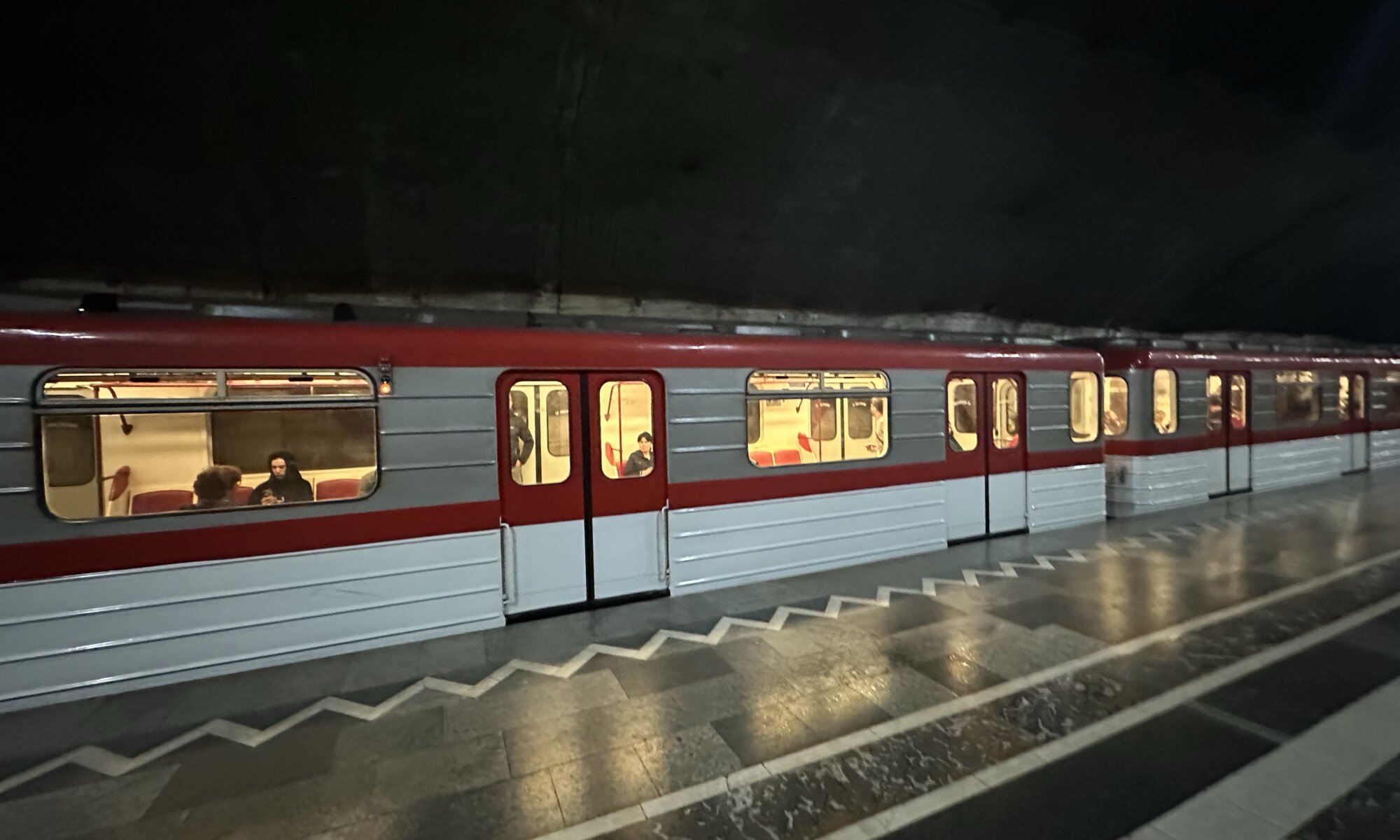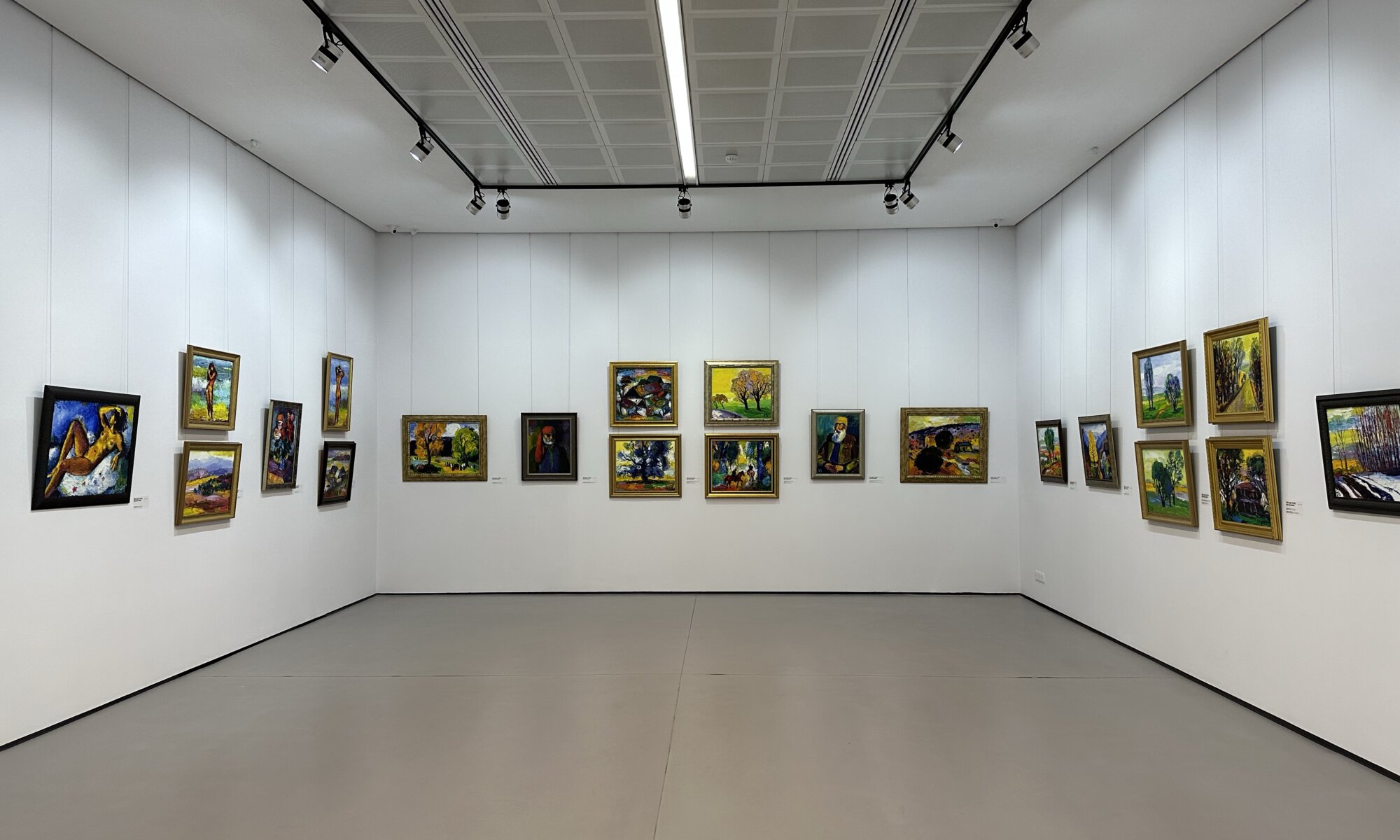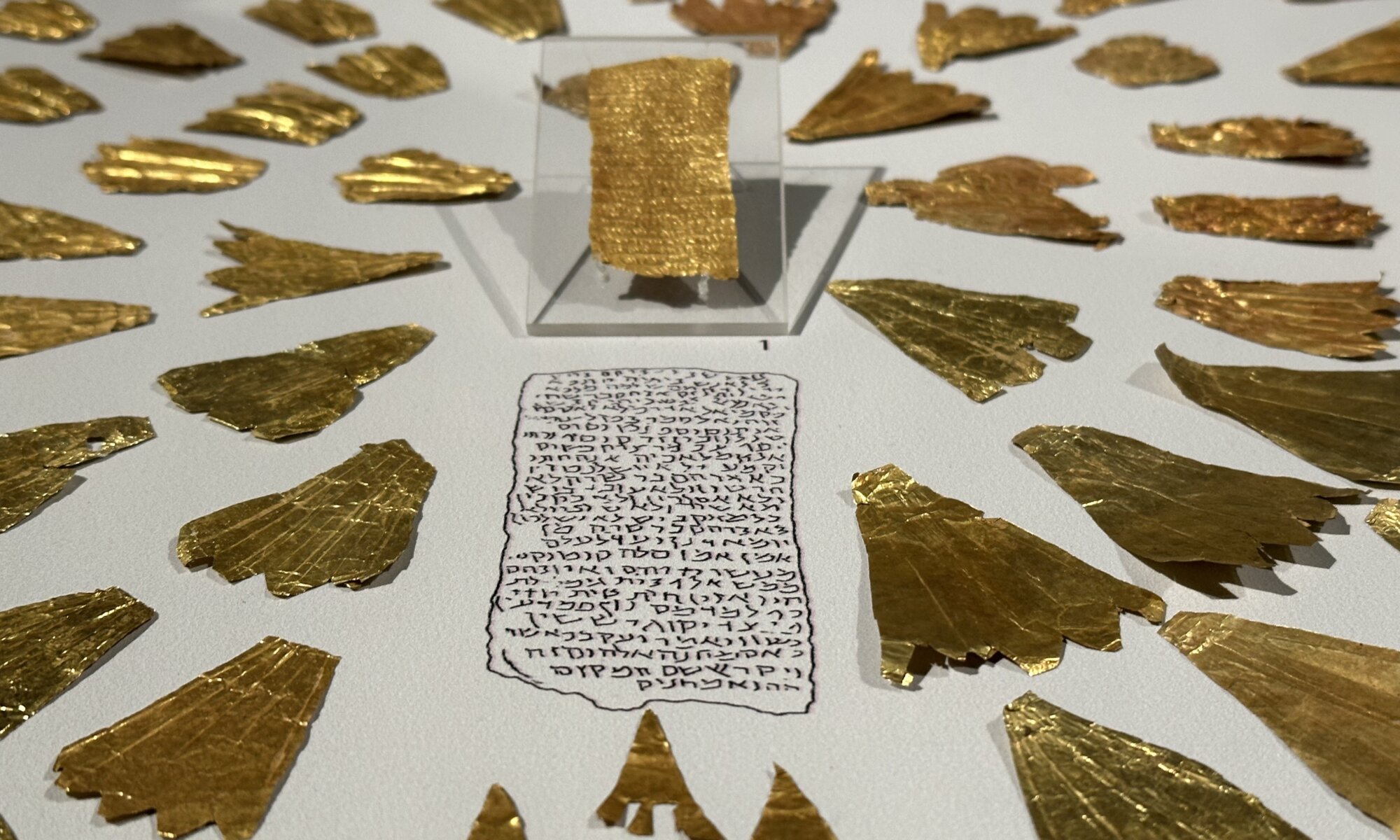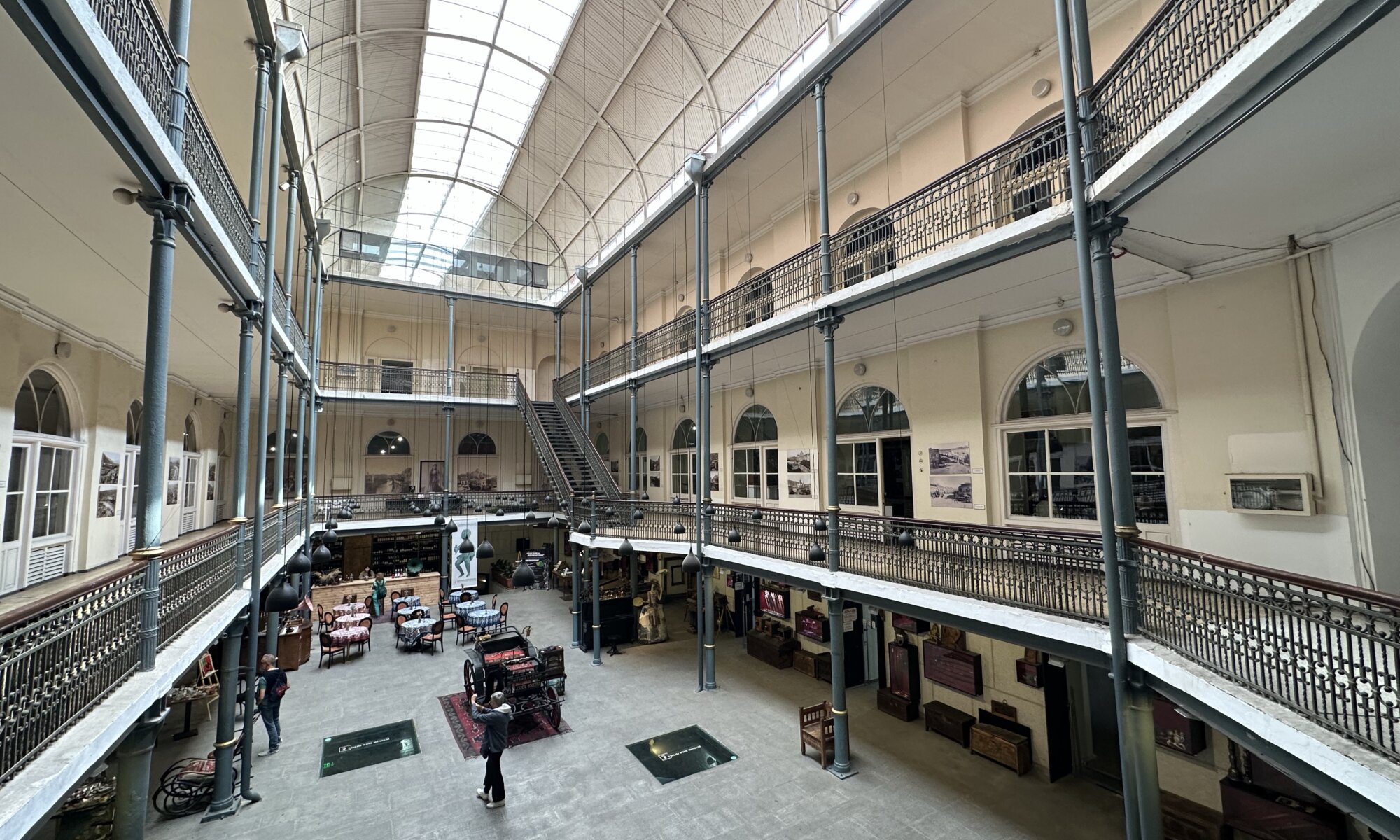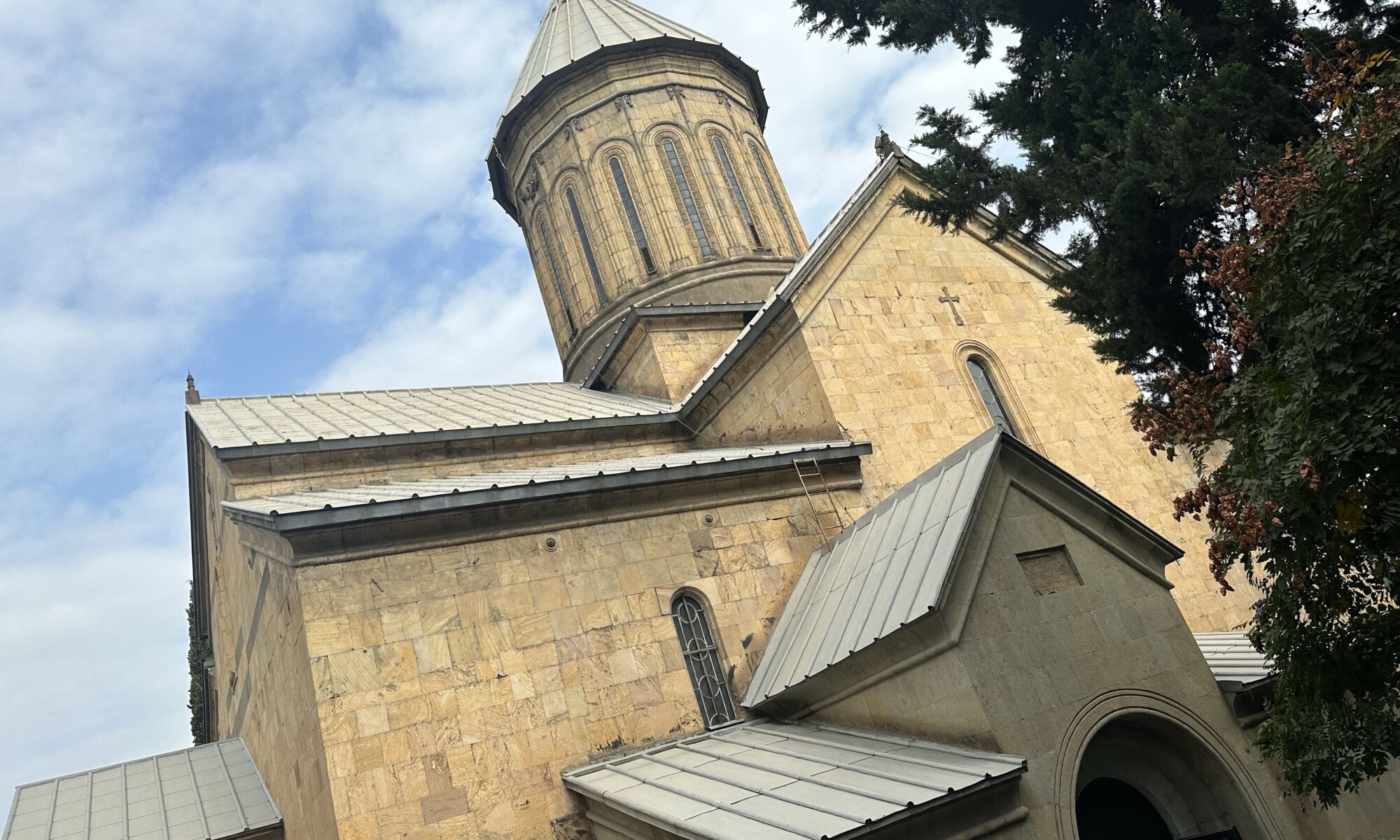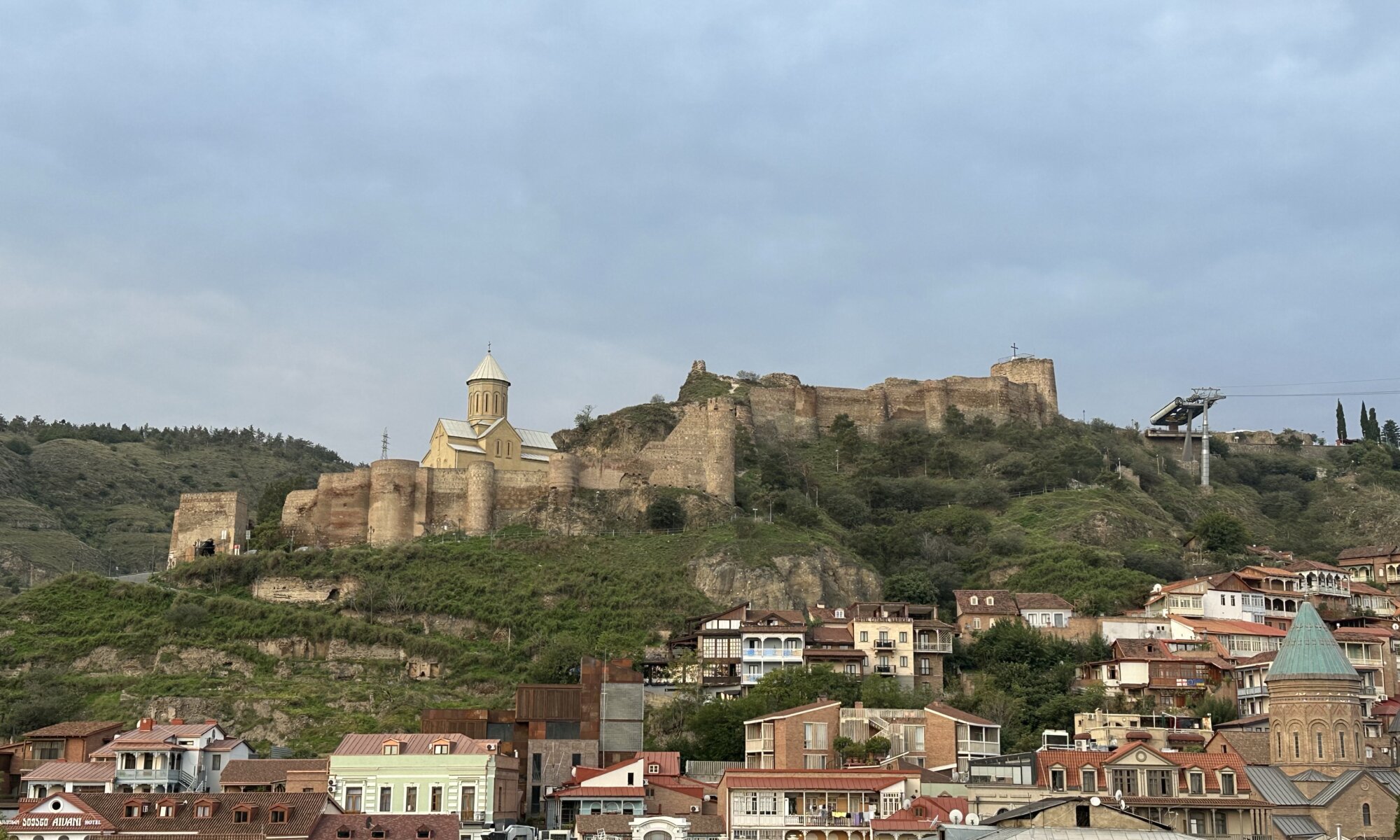It is one of the coziest places of თბილისი: the Leghvtakhevi canyon. From the Metechi church you can see the spa quarter on the opposite side of the Mtkwari river. A tiny stream runs through this quarter and you can follow it on narrow paths and by passing on several bridges. Atop the high rocks next to it houses are standing directly at the chasm and their balconies are also reaching out; a really nice view. At the end of the canyon you will find the small Leghvtakhevi waterfall.
Continue reading “Leghvtakhevi”Chronicle of Georgia
It is one of the lesser visited sights at თბილისი, probably because it is located outside the city center on a hill and you need to travel by taxi to get there. You can also reach this place by metro and bus if you like to accept the challenge – it takes you to the suburbs of the capital city and shows you ordinary life. The Chronicle of Georgia is an impressive monument created by Zurab Konstantinovich Tsereteli in 1985, still during Soviet time. The massively high columns were never fully completed and show the history of Georgia at the top and the story of Christ at the bottom.
Continue reading “Chronicle of Georgia”ანალფაბეტი
When travelling throughout Georgia you might feel a little bit like a ანალფაბეტი (=analphabet). The Mkhedruli alphabet used most often looks really beautiful but is completely undecipherable for visitors from abroad. In the capital city most often English translations are available (except on and in buses) and this doesn’t cause any problem. The Georgian language belongs to the Kartvelian languages – together with Mingrelian, Svan (both spoken in northwest Georgia) and Laz (used in northern Turkey, south of the border to Georgia).
Continue reading “ანალფაბეტი”Fabrika
Maybe the best place to stay and party at თბილისი is Fabrika. It was once a Soviet sewing factory but has been turned into a fantastic multi-functional space with a hostel, bars, restaurants, artist studios and a co-working space. At daytime the large shared living room invites you to hang out, read or work. In the evening hours the inner yard transforms into a party zone with many people enjoying the atmosphere and some drinks.
Continue reading “Fabrika”Metromoney
At Georgia they seem to like rechargeable payment cards. Whether its for the Mtatsminda fun fair or public transport at თბილისი, you just need to lend a plastic card for a small deposit, top-up some money, pay as often as you wish and later return the card. Already when you reach the international airport you can go to a vending machine, buy a card and put money on it to use the bus bringing you to the city center.
Continue reading “Metromoney”Fine arts
The Georgian Museum of Fine Arts is a modern art museum at თბილისი and it is probably the museum I like most in the capital city of Georgia. Privately owned and located on Rustaveli avenue it houses a massive collection of Georgian art – from artists you probably haven’t heard in western Europe or the rest of the world. That is mostly because these artists created their works mostly during Soviet times and the Iron Curtain prevented them getting known on the other side. A perfect chance to change this!
Continue reading “Fine arts”Georgian national museum
If you like to visit museums at თბილისი there is one place to be: the Shota Rustaveli avenue starting north of Liberty square. A wide boulevard with historic buildings containing the national gallery, the national museum of fine arts and the Simon Janashia Museum of Georgia, which is part of the Georgian national museum complex. It contains a vast collection of archeological and ethnographic artefacts giving insight into the development of the culture, the people and the state of Georgia.
Continue reading “Georgian national museum”City history
The city history museum of თბილისი can be a nice place for visitors or a disappointment; that’s depending on your expectations. The building with an art nouveau facade dates back to the 19th century and copies the structures of an ancient caravanserai of the Silk Road. It contains the city history museum on the ground floor and a bar, a wine museum and some shops in the basement. I found the building itself to be really beautiful but the museum could really be extended. The city history museum is located on Sioni street next to the Sioni cathedral.
Continue reading “City history”Sioni
At the touristic center of თბილისი, next to the city history museum and river Mtkwari you can find the Sioni cathedral some meters below todays street level. It is a classic Orthodox church building like you can find them throughout all of Transcaucasia – but for the Georgian Christians it is the most important sacred place dating back to the year 575 CE. It is named after Mount Zion, the temple mount in Jerusalem.
Continue reading “Sioni”Nariqala
The city of თბილისი was one protected by the fortress Nariqala – which translates to ‘impregnable fortress’. It was created in the 4th century CE by the Persian Sassanids and was altered by Vakhtang I of Iberia as well as by Arabs, Mongols, Turkish and Persian forces. Today entering the fortress through its main gate might be a bit disappointing as the walls look pretty new and a modern style church is built within. Really impressive is the upper part of the fortress that is a citadel standing at three sides directly at the abyss.
Continue reading “Nariqala”